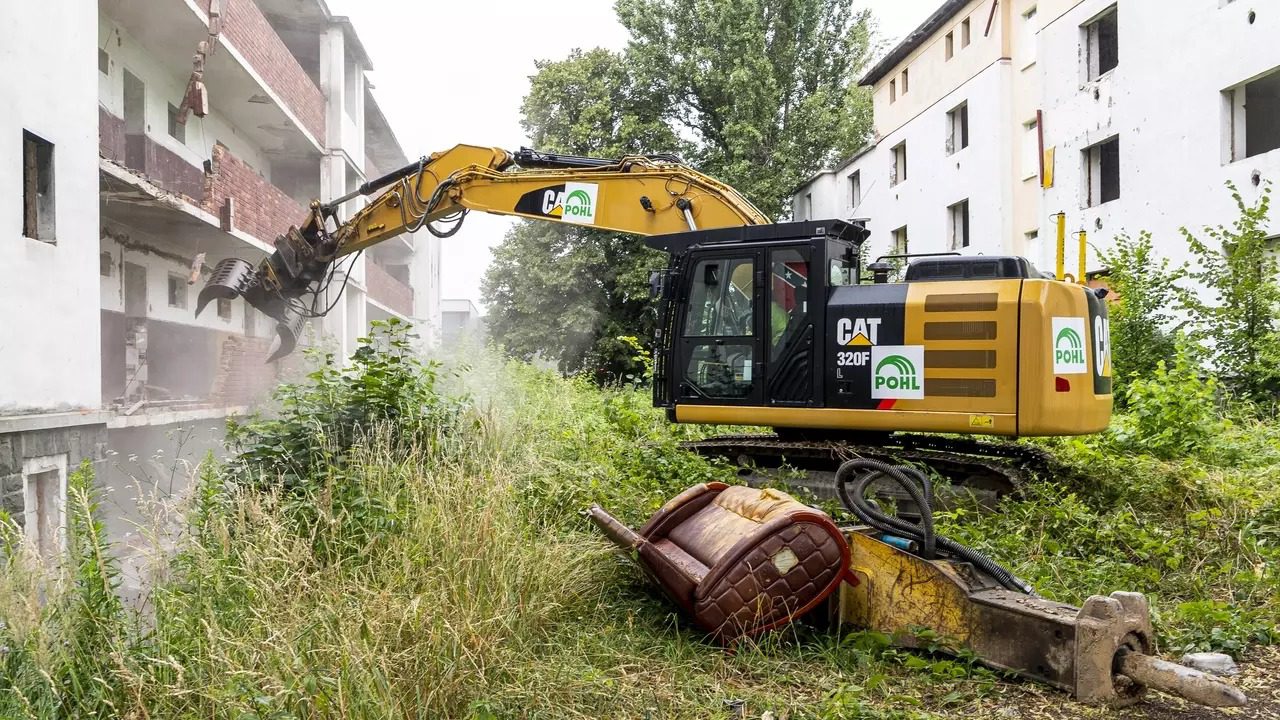The demolition of two pavilion houses on Matiční Street in Ústí nad Labem began on Thursday. In 1999, the houses where the troubled residents lived at the time were briefly separated from the others by a ceramic fence.
This set off a great storm of discontent, especially from human rights activists, and the European Union criticized the Czech Republic. The liquidation of the buildings will cost around CZK 3 million.
The houses have been unoccupied since 2011, but until now, they have been occupied by homeless people or drug addicts. City police officers evicted several people staying there illegally from two houses belonging to the city on Thursday morning.
After they left, the company closed the fence. An excavator with a demolition hammer and hydraulic pliers is already on-site. But the company will start dismantling the roof trusses before demolishing the houses and calling on the municipal police to go through them again. The rooms are full of clutter and must also be cleared out first. The homes should be razed within a month.
Meanwhile, the site will be a lawn after demolition. The town hall does not plan to build any new apartment buildings.
“It wouldn’t be a very peaceful place to live anyway. In my opinion, it’s a location more suitable for some business activities, for example, service stations and car dealerships, like those in the area,” said Deputy Mayor Pavel Tošovský (ODS).
The last one belongs to the Czech Ports
Initially, there were four houses opposite the old residents’ homes. The town hall had one demolished earlier with money from the state. The Czech Ports company owns the last house. “We are negotiating with the owner. The negotiations are quite friendly. They are also planning demolition. We want the last house to be demolished and the land to be nicely landscaped,” Tošovský said.
The inadaptable people and non-payers mainly were moved into the tenement houses from prefabricated buildings in the city in 1994. Old residents began complaining about noise, disorder, and theft and demanded that walls separate the homes. The town hall had a 1.8 m high ceramic fence built on the site.
However, it separated the pavement houses for less than two months. At that time, journalists from around the world were heading to Ústí. Deputy Mayor Tosovsky, who was then the district’s mayor, was behind the fence.
“It was a very hectic time. We were accused of xenophobia and racism – yet we were only interested in helping people who needed to get up in the morning to go to work. One hundred forty people lived across the street from them at the time, partying into the night, with children running around in the street and garbage piling up all over the place. If anyone asks me if we would have done the same, I say yes. Because those people were suffering here, we had several petitions about violating the night peace, the disorder. So we tried to help them. We replaced the old rusty fence with one that dampened the noise and disorder,” Tošovský said.






Leave a Reply